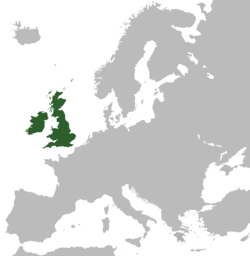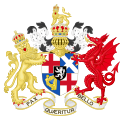
The Commonwealth was the political structure during the period from 1649 to 1660 when England and Wales, later along with Ireland and Scotland, were governed as a republic after the end of the Second English Civil War and the trial and execution of Charles I. The republic's existence was declared through "An Act declaring England to be a Commonwealth", adopted by the Rump Parliament on 19 May 1649. Power in the early Commonwealth was vested primarily in the Parliament and a Council of State. During the period, fighting continued, particularly in Ireland and Scotland, between the parliamentary forces and those opposed to them, in the Cromwellian conquest of Ireland and the Anglo-Scottish war of 1650–1652.

Oliver Cromwell was an English statesman, politician, and soldier, widely regarded as one of the most important figures in the history of the British Isles. He came to prominence during the 1639 to 1653 Wars of the Three Kingdoms, initially as a senior commander in the Parliamentarian army and latterly as a politician. A leading advocate of the execution of Charles I in January 1649, which led to the establishment of The Protectorate, he ruled as Lord Protector from December 1653 until his death in September 1658. Cromwell remains a controversial figure due to his use of the army to acquire political power, and the brutality of his 1649 campaign in Ireland.
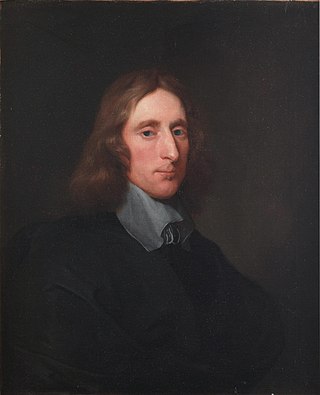
Richard Cromwell was an English statesman, the second and final Lord Protector of the Commonwealth of England, Scotland and Ireland and the son of the first Lord Protector, Oliver Cromwell.

George Monck, 1st Duke of Albemarle KG PC JP was an English soldier, who fought on both sides during the Wars of the Three Kingdoms. A prominent military figure under the Commonwealth, his support was crucial to the Restoration of Charles II in 1660, who rewarded him with the title Duke of Albemarle and other senior positions.

John Lambert was an English Parliamentarian general and politician. Widely regarded as one of the most talented soldiers of the period, he fought throughout the Wars of the Three Kingdoms, and was largely responsible for victory in the 1650 to 1651 Scottish campaign.

The Rump Parliament was the English Parliament after Colonel Thomas Pride commanded soldiers to purge the Long Parliament, on 6 December 1648, of those members hostile to the Grandees' intention to try King Charles I for high treason.

Barebone's Parliament, also known as the Little Parliament, the Nominated Assembly and the Parliament of Saints, came into being on 4 July 1653, and was the last attempt of the English Commonwealth to find a stable political form before the installation of Oliver Cromwell as Lord Protector. It was an assembly entirely nominated by Oliver Cromwell and the Army's Council of Officers. It acquired its name from the nominee for the City of London, Praise-God Barebone. The Speaker of the House was Francis Rous. The total number of nominees was 140, 129 from England, five from Scotland and six from Ireland.

The English Council of State, later also known as the Protector's Privy Council, was first appointed by the Rump Parliament on 14 February 1649 after the execution of King Charles I.
John Desborough (1608–1680) was an English soldier and politician who supported the parliamentary cause during the English Civil War.

The Third Protectorate Parliament sat for one session, from 27 January 1659 until 22 April 1659, with Chaloner Chute and Thomas Bampfylde as the Speakers of the House of Commons. It was a bicameral Parliament, with an Upper House having a power of veto over the Commons.
The Interregnum was the period between the execution of Charles I on 30 January 1649 and the arrival of his son Charles II in London on 29 May 1660, which marked the start of the Restoration. During the Interregnum, England was under various forms of republican government.
Events from the year 1659 in England.
Events from the year 1653 in England.

The Tender of Union was a declaration of the Parliament of England during the Interregnum following the War of the Three Kingdoms stating that Scotland would cease to have an independent parliament and would join England in its emerging Commonwealth republic.
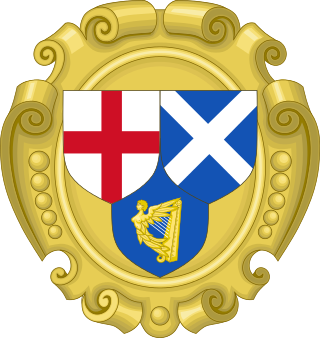
The Instrument of Government was a constitution of the Commonwealth of England, Scotland and Ireland. Drafted by Major-General John Lambert in 1653, it was the first sovereign codified and written constitution in England.

Charles Fleetwood, c. 1618 to 4 October 1692, was an English lawyer from Northamptonshire, who served with the Parliamentarian army during the Wars of the Three Kingdoms. A close associate of Oliver Cromwell, to whom he was related by marriage, Fleetwood held a number of senior political and administrative posts under the Commonwealth, including Lord Deputy of Ireland from 1652 to 1655.
The Commonwealth and Protectorate (1649-1660) refers to the kingless governments of England, Scotland, Great Britain and Ireland during the Interregnum between the actual reigns of the Stuart King Charles I (1625-1649) and his son King Charles II (1660-1685).
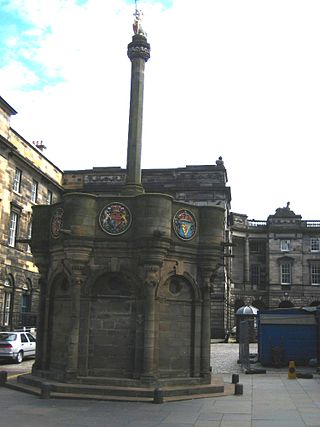
Cromwell's Act of Grace, or more formally the Act of Pardon and Grace to the People of Scotland, was an Act of the Parliament of England that declared that the people of Scotland were pardoned for any crimes they might have committed during the Wars of the Three Kingdoms. It was proclaimed at the Mercat Cross in Edinburgh on 5 May 1654. General George Monck, the English military governor of Scotland, was present in Edinburgh, having arrived the day before for two proclamations also delivered at the Mercat Cross, the first declaring Oliver Cromwell to be the protector of England, Ireland and Scotland, and that Scotland was united with the Commonwealth of England.

Scotland under the Commonwealth is the history of the Kingdom of Scotland between the declaration that the kingdom was part of the Commonwealth of England in February 1652, and the Restoration of the monarchy with Scotland regaining its position as an independent kingdom, in June 1660.

The interregnum in the British Isles began with the execution of Charles I in January 1649 and ended in May 1660 when his son Charles II was restored to the thrones of the three realms, although he had been already acclaimed king in Scotland since 1649. During this time the monarchial system of government was replaced with the Commonwealth of England.
